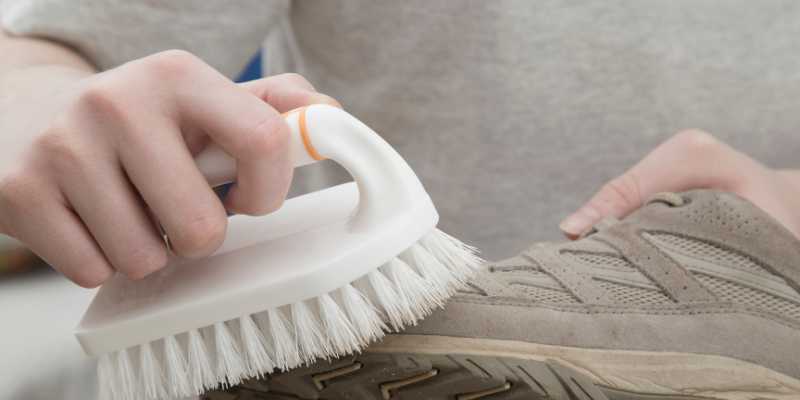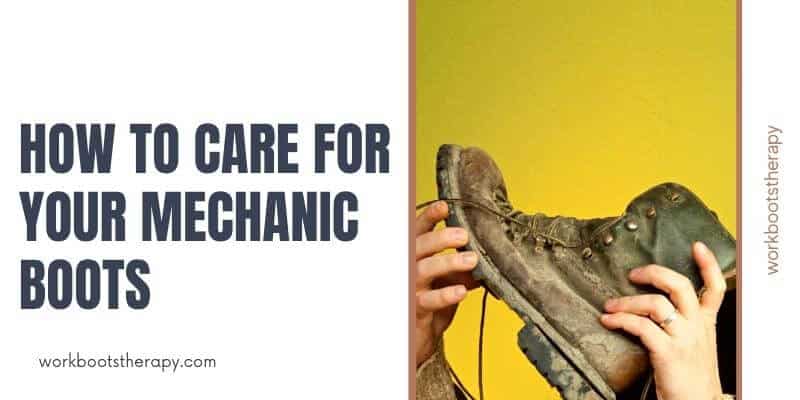As a mechanic, your boots are an essential part of your workwear. They protect your feet from hazards, provide comfort during long hours of standing, and keep you stable on slippery surfaces. However, with constant use, your mechanic boots can become dirty, worn-out, and even damaged. That’s why it’s essential to take care of them properly to ensure maximum longevity. In this article, we will discuss some tips and tricks on how to care for your mechanic work boots to keep them in good condition.
Types of Mechanic Boots

Before we dive into the maintenance tips, let’s discuss the different types of mechanic boots available. Mechanic boots come in different styles, sizes, and materials. Some common types include:
- Steel toe boots: These boots are equipped with a steel toe cap that offers protection against falling objects and compression hazards. The steel toe cap shields your toes from potential injuries, making them essential for jobs where heavy objects are involved.
- Slip-resistant boots: These boots feature a specially designed sole with a slip-resistant tread pattern. The slip-resistant outsole provides superior traction and stability, reducing the risk of accidents on wet, oily, or slippery surfaces commonly found in mechanic workshops or garages.
- Waterproof boots: Mechanic work often involves exposure to liquids and wet environments. Waterproof boots are constructed using materials that effectively repel water, keeping your feet dry and comfortable even in damp conditions.
- Insulated boots: In cold environments, insulated mechanic boots are a must-have. They are designed with extra insulation to keep your feet warm and protected from low temperatures, ensuring optimal comfort during winter or in chilly work environments.
- Composite toe boots: For those who prefer non-metallic toe protection, composite toe boots are a suitable option. These boots feature a toe cap made of composite materials like carbon fiber or Kevlar, offering similar levels of protection as steel toe boots but with a lighter weight.
When choosing mechanic boots, consider the specific needs of your job and the features that will provide the most comfort and protection.
Precautions to Take Before Cleaning

Before cleaning your mechanic boots, it’s important to take some precautions to ensure the process is safe and effective. Here are eight points to consider:
- Read the manufacturer’s instructions: Familiarize yourself with the recommended cleaning guidelines provided by the boot manufacturer. Different materials and constructions may require specific cleaning methods.
- Remove dirt and debris: Use a soft brush or cloth to gently remove any dirt, mud, or debris from the boots before cleaning. This prevents scratching the surface during the cleaning process.
- Check for loose or damaged parts: Inspect the boots for any loose stitching, torn materials, or damaged components such as eyelets or laces. Address these issues before cleaning to avoid further damage.
- Test cleaning agents on a small area: If you’re using a new cleaning solution or method, test it on a small, inconspicuous area of the boots first. This helps ensure that the cleaning agent doesn’t cause any discoloration or adverse effects.
- Avoid soaking the boots: Unless specifically recommended by the manufacturer, avoid fully submerging the boots in water or soaking them excessively. Excessive moisture can damage certain materials and affect the structural integrity of the boots.
- Use appropriate cleaning tools: Select cleaning tools, such as brushes or cloths, that are suitable for the material of your boots. Avoid using abrasive or harsh cleaning tools that can cause unnecessary wear or tear.
- Protect non-waterproof boots: If your boots are not waterproof, take extra care to prevent excessive exposure to water during the cleaning process. Consider using a damp cloth instead of immersing the boots in water.
- Allow boots to dry thoroughly: After cleaning, allow your boots to air dry completely before wearing or storing them. Avoid using direct heat sources, such as heaters or dryers, as they can cause damage or shrinkage.
By following these precautions, you can ensure that your mechanic boots are cleaned effectively while minimizing the risk of damage or deterioration.
Cleaning Mechanic Boots

Cleaning your mechanic boots regularly is crucial for maintaining their appearance and longevity. Here are the steps to follow when cleaning your boots:
- Determine the appropriate cleaning method: Consider the material of your boots and refer to the manufacturer’s instructions for the recommended cleaning method. Different materials may require specific approaches.
- Gather the necessary cleaning supplies: Prepare a soft brush, a clean cloth, and a cleaning solution suitable for your boots’ material. Avoid using harsh chemicals or abrasive cleaning agents that can damage the boots.
- Remove laces and clean separately: Take off the laces and set them aside. You can clean them separately using a toothbrush or a soft cloth soaked in a mild soapy solution.
- Clean the boots’ surface: Dip the soft brush or cloth into the cleaning solution and gently scrub the surface of the boots. Pay attention to any stained or soiled areas. Avoid saturating the boots with excessive cleaning solution.
- Clean the eyelets: Use the soft brush or cloth to clean the eyelets, ensuring they are free from dirt or debris. Be gentle to avoid damaging them.
- Rinse or wipe off excess cleaner: If using a cleaning solution that requires rinsing, dampen a clean cloth with water and wipe away any residue from the boots. For non-rinsing solutions, use a clean, damp cloth to wipe the boots’ surface.
- Air dry the boots: After cleaning, place the boots in a well-ventilated area and allow them to air dry naturally. Avoid using direct heat sources, as they can cause damage or deformation. Ensure the boots are completely dry before wearing or storing them.
- Re-lace the boots: Once the boots are dry, reattach the laces and adjust them to your desired fit.
Regular cleaning will help maintain the appearance and performance of your mechanic boots. By following these steps, you can keep your boots in good condition and ensure they continue to provide the necessary protection and comfort for your work.
Conditioning Mechanic Boots

Conditioning your mechanic boots helps to keep them supple, prevent cracking, and maintain their waterproofing. Here are some steps to follow when conditioning your boots:
- Choose an appropriate conditioning agent: Select a conditioning agent that is compatible with your boots’ material. Leather boots require a different conditioning agent than rubber boots.
- Apply the conditioning agent: Apply a small amount of conditioning agent to a soft cloth or sponge and rub it onto the boots’ surface, paying extra attention to areas that are prone to cracking, such as the toe and heel.
- Allow the conditioning agent to absorb: Leave the conditioning agent on the boots for the time recommended by the manufacturer. This allows the leather or other materials to absorb the conditioner and become supple.
- Wipe off excess conditioner: After the recommended time, use a clean cloth to wipe off any excess conditioner. This prevents the boots from feeling greasy or attracting dirt.
- Wipe off excess conditioner: After the recommended absorption time, use a clean cloth to wipe off any excess conditioner from the boots’ surface. This step helps prevent the boots from feeling greasy or attracting dirt.
- Buff or polish (if applicable): Depending on the material of your boots, you may choose to buff or polish them after conditioning. This can help restore shine and enhance the overall appearance of the boots. Refer to the specific instructions for your boots’ material.
- Allow boots to dry: After conditioning and any additional polishing or buffing, allow your boots to air dry completely in a well-ventilated area. Avoid exposing them to direct heat sources, as it can damage the material.
Storing Mechanic Boots

Proper storage of your mechanic boots is crucial to ensure maximum longevity. Here are some steps to follow when storing your boots:
- Clean your boots: Before storing, clean your boots thoroughly to remove any dirt or debris. This prevents the boots from becoming damaged during storage.
- Allow the boots to dry: Ensure that your boots are completely dry before storing them. Wet boots can become damaged or develop mold during storage.
- Use a shoe tree or stuff the boots: Stuffing the boots with paper or using a shoe tree helps to maintain their shape during storage. This prevents the boots from developing creases or becoming misshapen.
- Store in a dry place: Store your boots in a cool, dry place away from direct sunlight or heat sources. This prevents the boots from becoming damaged or discolored.
Final verdict
Caring for your mechanic boots is essential to ensure maximum longevity and to protect your feet while working. Regular cleaning, conditioning, and proper storage help to maintain the appearance and functionality of your boots. Follow the tips discussed in this article to keep your mechanic boots in good condition for longer.
In summary, to care for your mechanic boots, take precautions before cleaning, use appropriate cleaning methods, condition the boots regularly, and store them properly. Following these tips will help you maintain the durability and longevity of your boots, and keep your feet safe and comfortable while you work.

